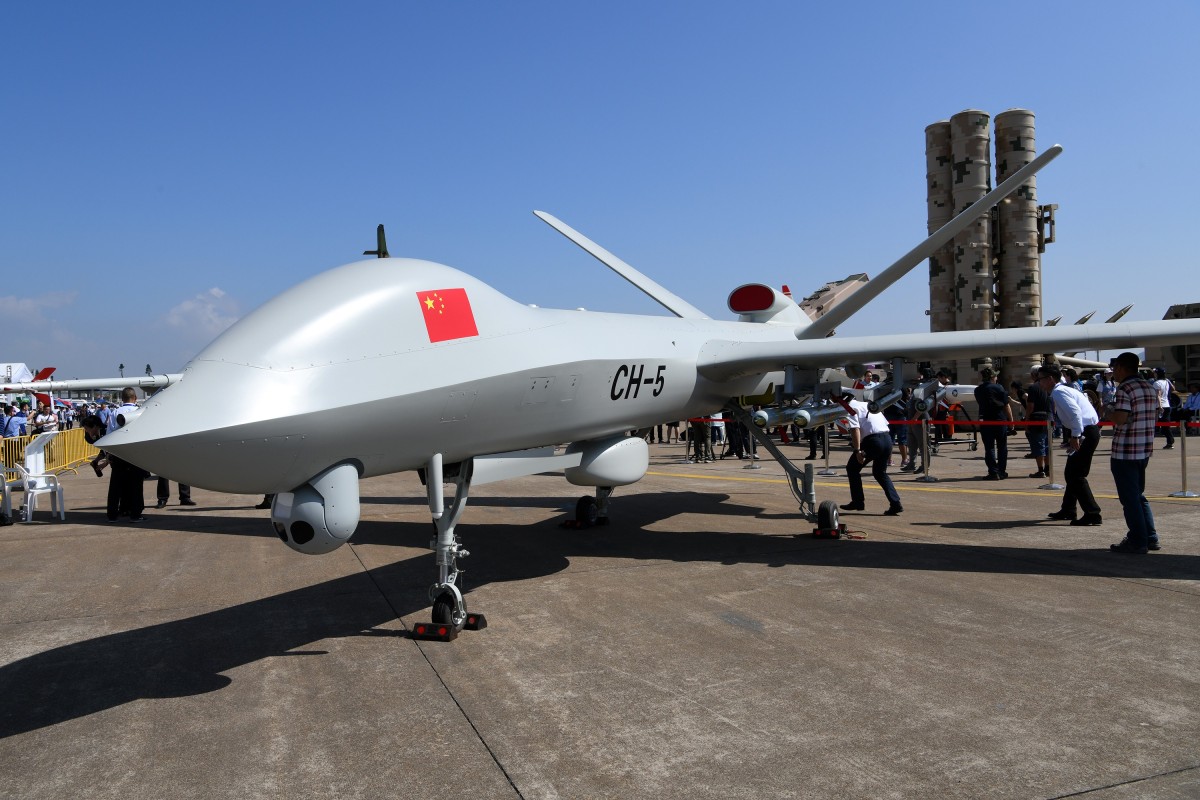Zhenhua Lu
 China sells arms to more countries and is world’s biggest exporter of armed drones, says Swedish think tank SIPRI
China sells arms to more countries and is world’s biggest exporter of armed drones, says Swedish think tank SIPRI
But arms exports grew by just 2.7 per cent in 2014-18 from the previous five years, according to Stockholm International Peace Research Institute report
China has expanded its customer base to 53 countries
China supplied 153 armed drones to 13 countries in the past five years.
China is selling arms to more countries and is now the world’s leading exporter of armed drones, according to a report released by the Stockholm International Peace Research Institute (SIPRI) on Monday.
But the latest data from the Swedish think tank shows Chinese arms exports increased by a relatively low 2.7 per cent in the period from 2014 to 2018, compared to the previous five years.
Weapons exports from the United States, however, jumped 29 per cent in the 2014-18 period from 2009-13.
Meanwhile, China expanded its customer base to 53 countries in 2014-18, up from 41 in the previous five years.
The researchers also found that China is the world leader in sales of armed drones, or unmanned combat aerial vehicles – supplying 153 of them to 13 countries in the past five years.
By contrast, the US – the world’s biggest arms exporter – only sold five armed drones, to Britain, over the 10 years from 2009.
The main buyers of the Chinese drones are Middle Eastern countries, including Egypt, Iraq, Jordan, Saudi Arabia and the United Arab Emirates.
Nan Tian, a researcher with SIPRI’s arms transfers and military expenditure programme, said China’s military technology advances – with more emphasis on developing its own weapons – were a key reason for the slower growth in arms exports, along with its defence budget.
“Previously, China relied on foreign countries such as Russia, Ukraine and France in developing its own armament industry,” Nan said. “Now, it has increasingly turned to domestic manufacturers such as AVIC and Norinco in arms exports.”
He added that armed drones had been “one of the most visible technological developments” made by Chinese arms producers.
As export growth has slowed, China’s military spending has been increasing at a more modest pace. Last week, Beijing said the defence budget would rise 7.5 per cent for 2019, the fourth consecutive year of single-digit spending growth for the People’s Liberation Army.
SIPRI, which monitors the international arms trade, said the slower growth in China’s weapons exports in recent years contrasted sharply with the 195 per cent rise in arms sales in the 2009-13 period, from the previous five years.
Pakistan, China’s key ally in South Asia, remained Beijing’s top arms buyer in the last five years – a position it has maintained since 1991 – followed by Bangladesh and Algeria.
The US, Russia, France, Germany and China are the world’s top five arms exporters, accounting for three quarters of the total volume of weapons sales from 2014 to 2018.
Of China’s arms exports, 70 per cent went to Asia and Oceania in the last five years, followed by 20 per cent going to Africa and 6.1 per cent to the Middle East.
Meanwhile, the top three buyers of American weapons were all US allies – Saudi Arabia, Australia and the UAE.
The SIPRI report noted that almost all of the biggest arms importing countries were not on China’s top buyers list.
“China’s arms exports are limited by the fact that many countries – including four of the top 10 arms importers in 2014-18 (India, Australia, South Korea and Vietnam) – will not procure Chinese arms for political reasons,” the report said.
No comments:
Post a Comment